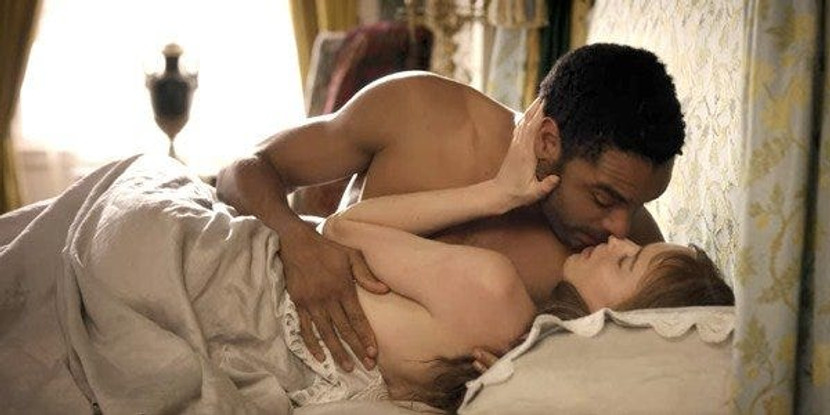Just a couple of decades ago, having TV programmes which involved some pretty explicit material being shown as a standard norm, was unthinkable. If we cast our minds back to yesteryear (the older people among us anyway), the only remotely racy thing being shown in the evening was the love affairs going on in Coronation Street. And even those were kept to a chaste kiss or two. Or there were very innocent comedy shows on, Absolutely Fabulous and the like. Now, we did have the 9pm watershed, after which the programmes could potentially get a bit more, ‘open’, shall we say, but even then, the content was heavily restricted. But if we go to the late-night films shown on Friday and Saturday nights around 10-11pm, then you might see something worth seeing. Sharon Stone’s legs in Basic Instinct, for example, or the sex scene in Top Gun. ITV ran a particularly popular late night TV programme on Fridays called Eurotrash, which vaguely skirted around the edges of what was deemed acceptable and was probably the closest thing to pornography that the TV bosses dared to show.
And then, along came the internet, which shattered people’s perception of what was acceptable to be shown, or not. From its very early days there was explicit material available on demand and it’s done nothing but increase since. Take Naked Attraction, for example, that terribly tasteful TV show where the contestants are standing naked in a cubicle which gradually reveals each section of their body from bottom to top – every single bit. Nothing is covered up or blurred out. That would have been UNTHINKABLE even just a few years ago. And then we have programmes like Love Island and Big Brother, which don’t shy away from allowing everyone to see whatever night time activity might be going on. Oh, and don’t forget that the contestants are more or less contracted to parade around in tiny bikinis during the day and skin tight clothing in the evening. This is why it’s fair to say that in one way or another there’s a prolific amount of sexual behaviour freely being shown. And is this right, or wrong?
Pros.
Everyone has to learn about sex in one way or another, and the more information given, in multiple ways, the better. Forewarned is forearmed and if young people are exposed to seeing what sexual behaviour might look like, they will better understand what’s right and what’s wrong, what contraception is and how relationships are formed. Nobody is going to say that all of this can – or should be - learned through what’s on the TV, but normalising it allows young people to feel like they can ask questions. Take the teenage pregnancy stats, for example:
“The under-18 conception rate has decreased for 11 years running. In 2018, there were 15,644 conceptions to women aged under 18 in England and Wales, equating to 17 conceptions per 1,000 women. This was a 6% decrease compared with 2017, and a 60% decrease compared with 2007.”
These shifting figures have to be attributed to something – which is why showing glimpses of what sex looks like to millions of people is a bonus.
Sex on TV also keeps young people away from forming their entire understanding of sex through using pornography. Extreme porn is worryingly available these days, and whilst most people will look at porn regularly, watching this kind of stuff is dangerous for young people. It’s devoid of emotion or commitment, it often depicts just the physical act itself, which is dangerous to young people just starting out in their sexual lives. At least by seeing it on TV they can see that there are emotional feelings as part of sex, there is kissing and touching, it’s not just about carrying out the basics to achieve orgasm.
It gives a good idea of how to incorporate contraception into the bedroom. Without access to comprehensive resources, it’s oh so easy for younger teens to wonder what on earth they need, and how to access it. By de-mystifying the concepts, it’s far easier for sexually active couples to work out how to protect themselves, plus open their eyes to the fact that condoms don’t need to be there purely for protection, there’s loads of choice out there which ramp up the fun too – tingling, flavoured, ribbed, dotted…..the list goes on.
Cons.
There’s two sides to every story, as the saying goes, and there’s definitely two sides to this argument!
Why should young people be exposed to sexualised behaviour just through watching TV? It might stimulate an interest which is then built upon by exploring the world of pornography and all the disadvantages that come along with that. By keeping children innocent, surely that’s protecting them?
It might give an unrealistic view of what naked bodies ‘should’ look like, especially in this Insta age. Slim, tanned and being groomed to perfection with white veneers, breast enlargements and lip fillers, is not a realistic view of naked bodies. Whereas seeing extra weight, stretch marks, gently sagging breasts and non-augmented bodies most definitely is.
Sex on TV takes away parental control over what they say to their children and when. The questions are going to be asked sooner, and in more depth.
With all of that said, showing sexual things on TV isn’t going to go away. Our boundaries for this sort of stuff have been crushed and they won’t ever be rebuilt. All we can do is monitor what’s appropriate and what might not be, and answer the questions openly when they inevitably arrive.



